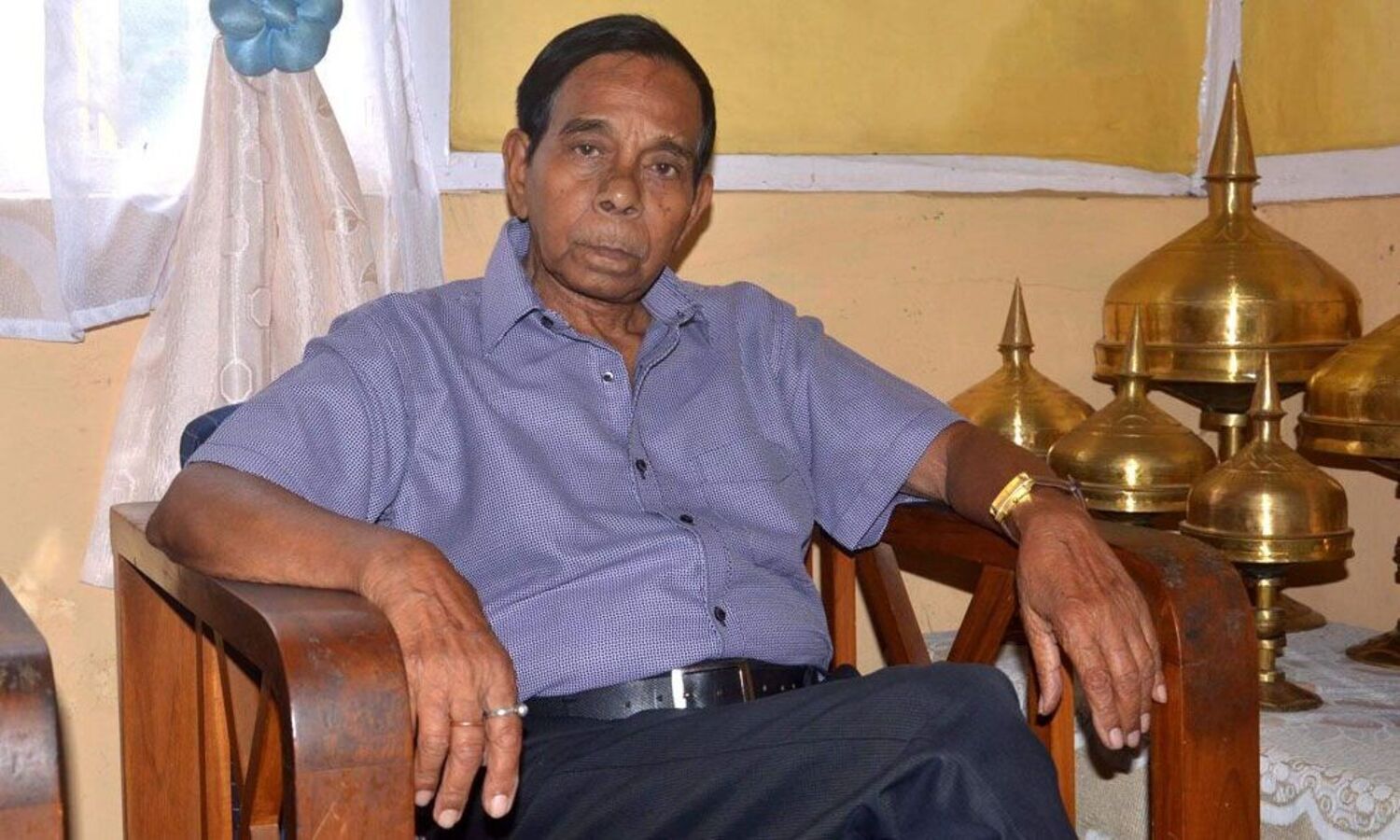
Unmilan Kalita
Kula Baruah, a legend of Axomiya music, passes on.
A call history of 14 calls with a particular person is not something to publicly brag about, neither having evening addas on how songs were recorded during the early ’70s, or how Silpukhuri was at the time when Shillong was still the capital of Assam – these are not things to publicly speak about. These are as ordinary as any day-to-day conversations. But when the other party in the conversation is elder to you by six decades and is speaking from his lived-in experience of how musically rich Guwahati was during the ’60s and ’70s, it is indeed a thing that one should cherish. The first rendezvous that I had with Kula Baruah was back in October last year, at his residence, thanks to Hiren Sarma, an eminent musician who had been a long-term associate of Baruah.
As we began to talk about Axomiya music after the customary introduction, the conversation attained its own momentum. “I am a big zero in terms of musical grammar, I love music for its beats and tunes,” clarified a smiling Baruah. “I was too much into western rhythms. If you listen carefully to Jumi jumi suwa tumi, you will find that its rhythm is very western. It was one of my experimental songs that people liked a lot.”
Baruah, who was born to late Premadhar Baruah and late Lily Baruah in 1938, did his primary schooling from Tezpur and later studied at Guwahati’s Cotton Collegiate, and finally completed his graduation from B. Borooah College. Music, to him, was a fascination since his childhood. Baruah fondly recalls his days when he went to perform at the Semoniar Sora of All India Radio, which was then located at Uzanbazar.
From the place where I was sitting in his drawing room, I could peek into the next room where a portrait of Jayanta Hazarika, along with one of Bishnu Rabha, was hanging on the wall. That brought in the context of how it was to know and record with Jayanta Hazarika, recalling the evergreen duet that he had with him – Rambha, Menaka, kimba Juthika. And Kula Baruah seemed more than keen to speak about the days of Deuti Barua’s Bristi.
“Rana was junior to me. He would hide his cigarettes when I was around, as a mark of respect. Rana was a musical prodigy,” he said with a tinge of nostalgia.
“Every person associated with Bristi was a genius in their respective fields, be it Bishnu Kharghoria, Biju Phukan or Bhupen Hazarika – everyone was a veteran in their arenas. I consider myself fortunate to have lent my voice in Karubar dunoyon, which was penned by Bhupen da and put into tune by Rana. The recording of that song was a moment that I shall cherish till my end,” Baruah had said.
Kula Baruah sang for several Assamese films, of which Srimati Mahimamoyi, Xadori, Bixex Erati, and Banahansa, are notable ones. Baruah also worked as a music composer for two movies – Srimati Mohimamoyi and Xadori, in collaboration with Atul Medhi. The duo is popularly known as Kula-Atul.
Sharing episodes from his musical life, Kula Baruah told me that Hiren Bhattacharyya, after penning down Phul nuphulilei ba ki hol tate, misplaced the sheet amongst piles of his office paperwork and couldn’t trace it. Only after a rigorous search did Bhattacharyya find it and then handed it over to Baruah for putting it to tune. Hiru da (as Hiren Bhattacharyya was popularly referred to) was a man of few words. “It is good,” Hiru da complimented after listening to the tune, Baruah recalled. Baruah also composed music for two Doordarshan Guwahati serials — Naamgharia and Lahar.
Baruah’s Prastar pahare from Bixex Erati (1979) holds a special place in my heart. When I asked about that particular song, Baruah talked about Upen Kakati, the music director of that film. As Baruah had his roots in Tezpur, he recalled that during the end of the 1950s, he found that a person known as Bhupen da was his neighbour across a playground. Bhupen Hazarika, Baruah mentioned, was a “musical mahapurush” for him. In fact, it was while discussing the creative genius of Bhupen Hazarika that our chat lasted the longest. Baruah told me how the ‘Poschimore pora/Bongore pora/marilu uraaa’ part in Akaxi janere, uroniya monore was tuned to resemble a musical take-off similar to the actual take off of an aeroplane. He was amazed how brilliantly Bhupen Hazarika could write anthropological songs, referring to O’ Mising Dekati that revolved around the attributes of the Mising tribe. Keeping my request, Baruah hummed Parbati Prasad Baruah’s evergreen ballad Seuji parot tumar nirola ghorot at the end.
On the midnight of February 24, Kula Baruah left us for his heavenly abode. This note isn’t an eulogy by any means. This is just a snippet from a time that I shared with the maestro. Getting to know Kula Baruah reminded me how perfectly the phrase maatir manuh fits in his context. It would be a drought down here from now onwards as the voices of Bristi have all left us.

